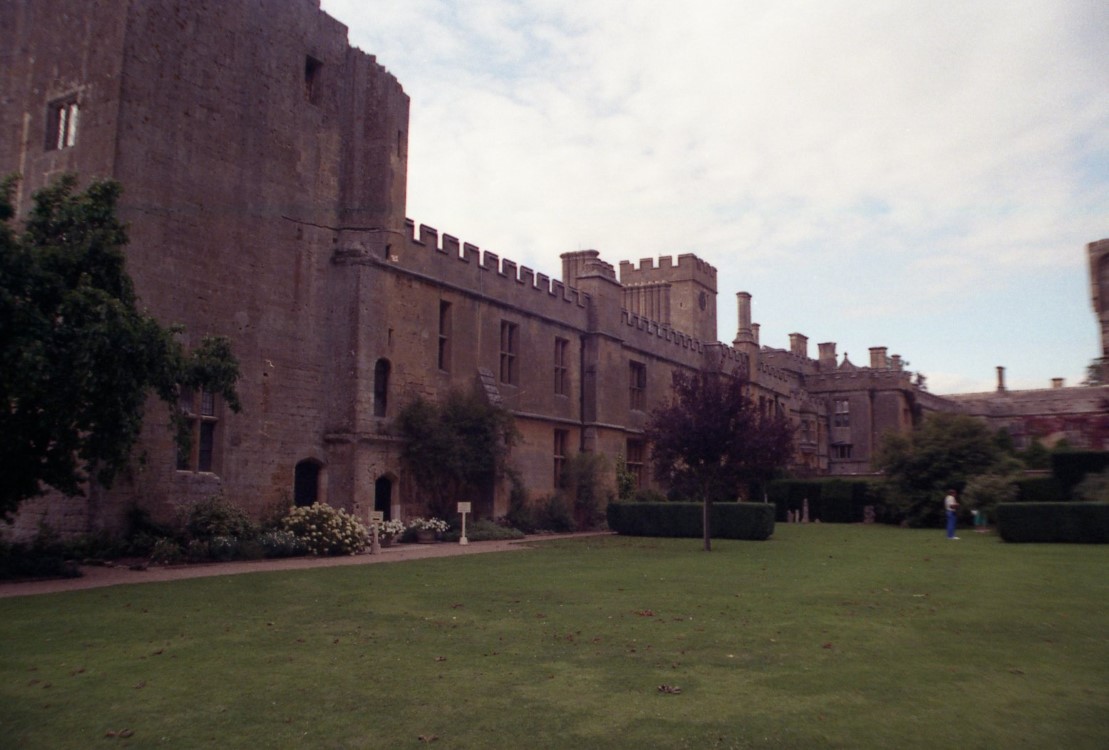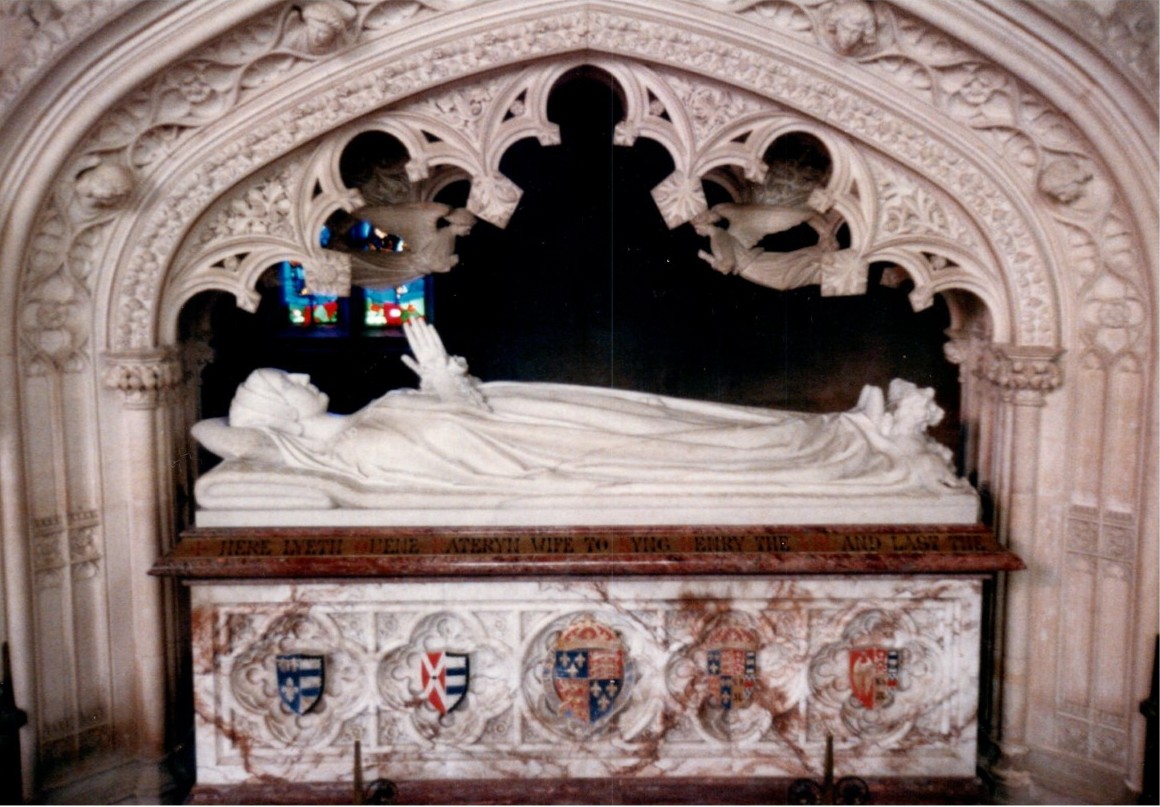Our next stop was Sudeley Castle. Though it had been the site of a castle since the 12
th century, the current castle was built in 1442. Over it’s life the castle has passed through many hands, including on multiple occasions, the Crown. It is probably best known as the resting place of Cathering Parr, the sixth wife of Henry VIII. As the last of

Henry’s wives, she survived only because she outlived him. On her death, she was buried in the chapel. Her remains were rediscovered after the castle and chapel had been left in ruins in the hulks of the English Civil War. In 1728 in an elaborate marble tomb in St. Mary’s Chapel where she continues to rest today. The castle is currently owned by Elizabeth, Lady Ashcombe, wife of the late Henry Edward Cubitt, 4th Baron Ashcombe, and her two children. In 1969, they decided to open the castle to the public.
After a couple of nights at Lords of the Manor, we checked out and moved to the ancient town of Bath. Located in the county of Somerset in southwest England. Founded by the Romans circa AD 60, it was then named Aquae Sulis or The Waters of Sulis. The Romans, who were fond of their baths, were drawn by the hot springs in the area. After the Romans left in the 5
th century, the baths fell into disrepair and were eventually lost when they flooded and silted up. By the 9
th century, the original Roman street pattern had be

en lost. In the years that followed, modern Bath was slowly built on top of the Roman ruins. The original Roman baths were not rediscovered until 1880. The baths were still used for bathing and swimming in modern times. However, in 1978, a young female swimmer contracted meningitis and died. The cause was eventually traced to an amoeba in the water of the baths and it was permanently closed to swimming and bathing. Today, the baths are a treasure trove of Roman daily life.
In the heart of Bath stands the Abbey Church of Saint Peter and Saint Paul, commonly known as Bath Abbey. Though originally a Benedictine monastery, it is now an Anglican parish church. The current structure was built in the 12
th and 16
th centuries. During WWII, Bath suffered three air raids but, fortunately, the Abbey remained unharmed.
It was at Bath that I had to part company with Millet and Nancy. They had plans to meet a friend elsewhere so I had to take leave of their company. Once again this presented a learning experience. It happens that, while you can rent a car outside of London, it is virtually impossible to find an automatic. It was thus that when we parted, I found myself in the possession of a strait shift automobile driven on the right! Having no choice, I dove in with both feet. Fortunately, the foot pedals are the same as on an American car and the gear pattern was the familiar H arrangement. Though I had to shift with my left hand, I found that the greatest challenge was driving on what my head kept telling me was the wrong side of the road. (Fortunately, on the day of our visit to Cleeve Cloud, Millet had felt ill and had to turn the driving duties over to me. So I wasn’t exactly a virgin at driving on the left.) I had not driven far from the rental agency before I had the hang of the situation, for the most part, and I felt ready to get out of town. I only found two major problems with this wrong sided driving. First, anytime I turned from one road to another, I really had to concentrate to aim for the correct lane. And the second was that I was not able to accurately judge just where the left front corner of the car was. This I had to concentrate on when in a tight squeeze. Thus, with my new found confidence, I headed out into the countryside.



 Henry’s wives, she survived only because she outlived him. On her death, she was buried in the chapel. Her remains were rediscovered after the castle and chapel had been left in ruins in the hulks of the English Civil War. In 1728 in an elaborate marble tomb in St. Mary’s Chapel where she continues to rest today. The castle is currently owned by Elizabeth, Lady Ashcombe, wife of the late Henry Edward Cubitt, 4th Baron Ashcombe, and her two children. In 1969, they decided to open the castle to the public.
Henry’s wives, she survived only because she outlived him. On her death, she was buried in the chapel. Her remains were rediscovered after the castle and chapel had been left in ruins in the hulks of the English Civil War. In 1728 in an elaborate marble tomb in St. Mary’s Chapel where she continues to rest today. The castle is currently owned by Elizabeth, Lady Ashcombe, wife of the late Henry Edward Cubitt, 4th Baron Ashcombe, and her two children. In 1969, they decided to open the castle to the public.
 en lost. In the years that followed, modern Bath was slowly built on top of the Roman ruins. The original Roman baths were not rediscovered until 1880. The baths were still used for bathing and swimming in modern times. However, in 1978, a young female swimmer contracted meningitis and died. The cause was eventually traced to an amoeba in the water of the baths and it was permanently closed to swimming and bathing. Today, the baths are a treasure trove of Roman daily life.
en lost. In the years that followed, modern Bath was slowly built on top of the Roman ruins. The original Roman baths were not rediscovered until 1880. The baths were still used for bathing and swimming in modern times. However, in 1978, a young female swimmer contracted meningitis and died. The cause was eventually traced to an amoeba in the water of the baths and it was permanently closed to swimming and bathing. Today, the baths are a treasure trove of Roman daily life.








 Avebury & Stonehenge
Avebury & Stonehenge